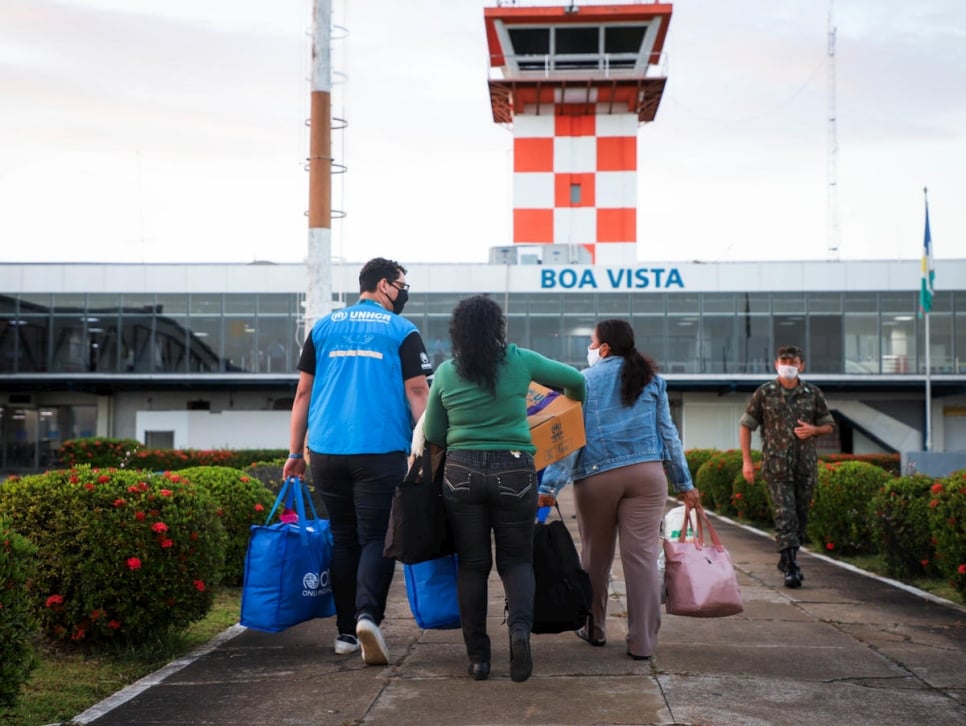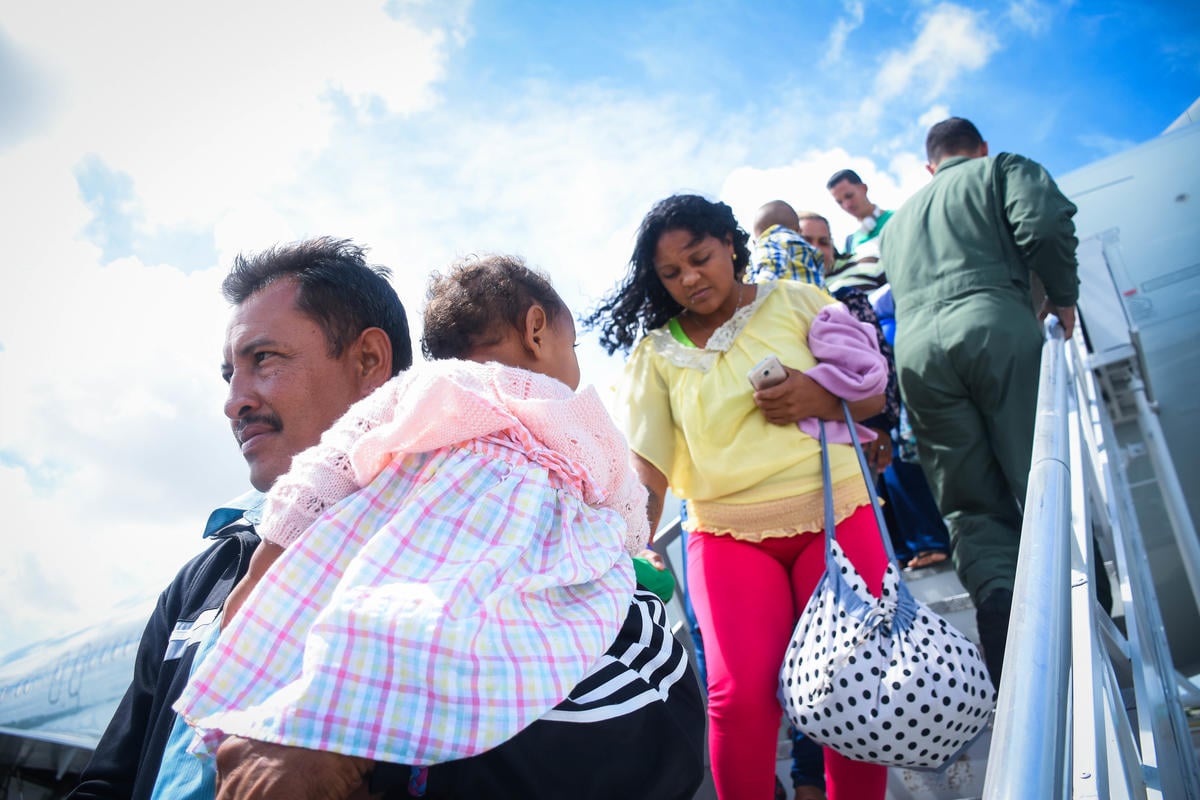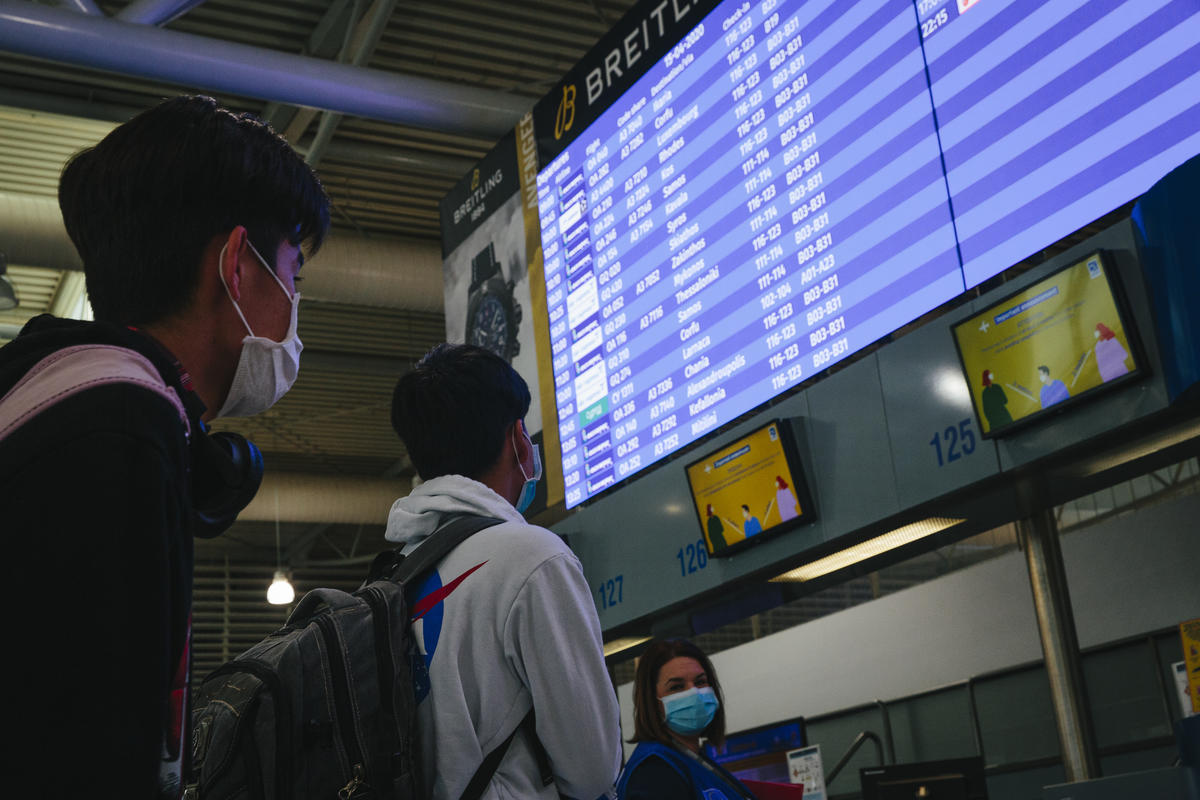First relocation convoy leaves Guinea's parrot's beak - Update
First relocation convoy leaves Guinea's parrot's beak - Update
The first convoy of refugees to be evacuated from Guinea's isolated Parrot's Beak region left Kolomba camp Wednesday afternoon, beginning an operation that is expected in coming weeks to relocate tens of thousands of people to safer camps inland. UNHCR staff reported that the first convoy was carrying 315 refugees, plus their belongings, to a transit camp at Katkama camp 120 kms to the north-east. There are still up to 30,000 refugees at Kolomba who will be offered transport during the relocation operation, which is expected to last several weeks.
The eleven-truck convoy set off for Katkama in the early afternoon for the eight-hour journey out of the vulnerable border region. Nearly one-third of the trip will be on unpaved roads. Katkama is on the fringes of the Parrot's Beak region, a thumb of Guinean territory jutting into Sierra Leone. The area has been largely cut off from humanitarian aid since last September because of fighting in the region. UNHCR and Guinean authorities want to move the refugees inland to safer and more accessible camps.
Those relocating will be given dry rations for the trip to Katkama, which is being used as a transit camp where they will spend two to three nights before transferring further north to new sites in Dabola and Albadaria Prefectures. The new sites are some 200 kms from the volatile border area.
Some refugees in Kolomba are, however, still reluctant to move, saying they prefer to wait a little longer in hopes the security situation will improve so they can return home. Some have been refugees in the region for a decade and their original homes are close to the border. UNHCR has explained that it cannot provide regular assistance to the volatile border area and can only assure aid in the new sites. It is hoped that the start of the relocation convoys today will help build refugees' confidence in relocation as the best immediate option. UNHCR is continuing an information campaign in Kolomba and other camps to inform refugees of the evacuation plan and the reasons for it.
The relocation movement had been expected to start on Monday but was postponed because of last-minute concerns among refugees over plans to have most of them walk to Katkama because of a lack of vehicles. Under the initial plan, only vulnerable refugees would be trucked to Katkama while the able-bodied would have to walk, assisted by aid stations along the way. Because of refugee opposition to walking, UNHCR is now trying to obtain more trucks so all refugees can be given transport.
The duration of the relocation operation, initially scheduled for completion by the end of May, will now depend on the provision of additional trucks. UNHCR has already devoted a fleet of 50 vehicles to the evacuation. Twenty-five trucks will be used daily to transport refugees from Kolomba to Katkama, while the other 25 trucks will continue the relocation from the transit site at Katkama to the new camps further north.








